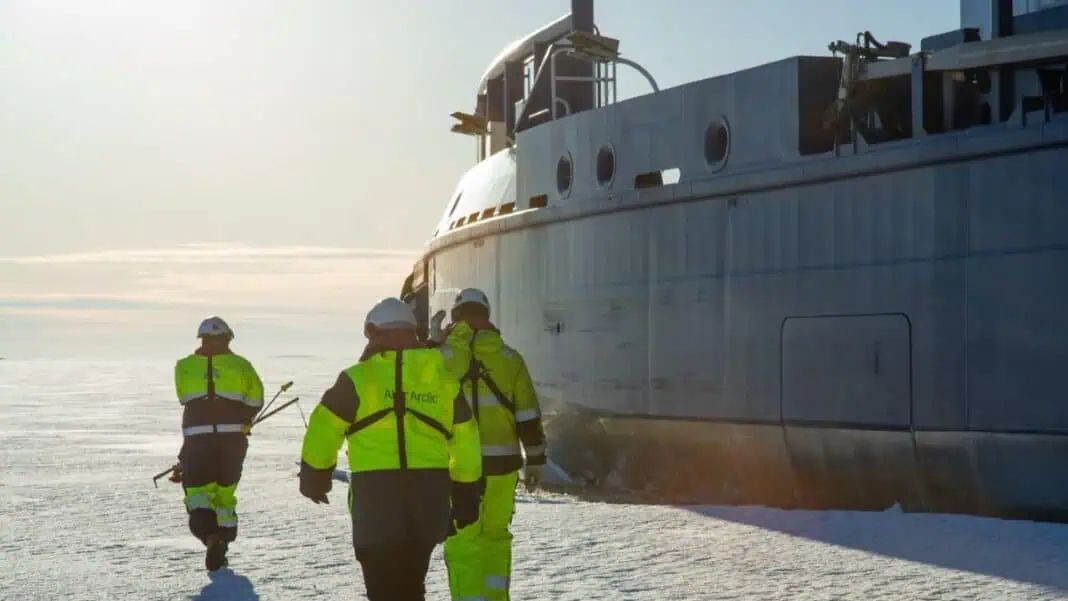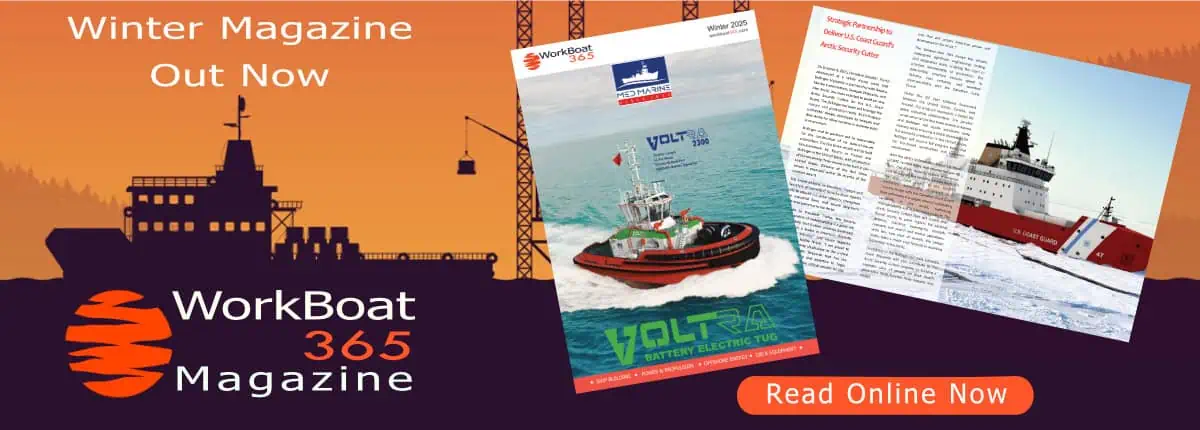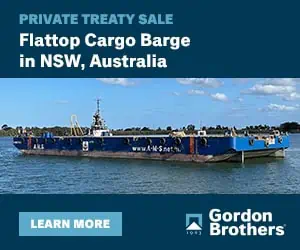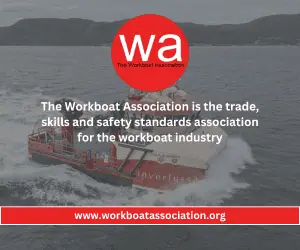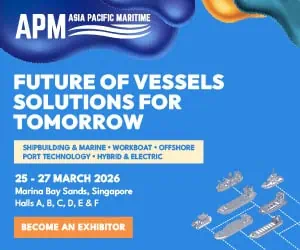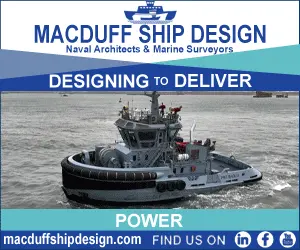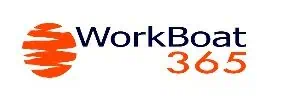The Finnish Transport Infrastructure Agency has awarded Aker Arctic Technology Inc. the design contract for a next-generation icebreaker, marking a significant milestone in Arctic maritime innovation. The new vessel will incorporate cutting-edge technology to enhance icebreaking performance, operational efficiency, and environmental sustainability.
Finnish icebreakers are classified based on a three-tier system with Class A being the largest and most powerful, and Class C being more akin to a large ice-strengthened tug. Finland’s newest icebreaker Polaris, also an Aker Arctic design, belongs to the highest category, while Voima is the country’s sole B-class icebreaker.
Aker Arctic will develop at least two design packages for an intermediate-class icebreaker referred to as B+, a compact icebreaking vessel more capable than what the current requirements would call for in mid-tier icebreakers.
Future icebreakers must adapt to the changing ice regime in the Baltic Sea. The ongoing icebreaking season has yet again demonstrated how the ice fields tend to be more dynamic and heavily fragmented during mild winters, including wide slush barriers and areas of open water.
The prevailing ice conditions can thus be a major obstacle to commercial shipping and present challenges for the assisting icebreakers even when the ice cover is not particularly thick. This will require new thinking regarding the design criteria for the next generation of icebreakers.
As icebreakers are one of the cornerstones of the Baltic Sea winter navigation system, another design goal is to improve the overall operational efficiency. This ensures that the new icebreaker will not only be effective in its primary mission — assisting ships to and from Finnish ports — but also economical to acquire, operate, and maintain over the entire expected operational lifespan. The aim is for the new icebreaker’s service life to exceed 50 years. At the same time, the environmental footprint should be reduced.
The B+ project will commence with an evaluation of three alternative fuels – liquefied biogas, methanol, and ammonia – for their technological maturity and feasibility in this project. Afterwards, the Finnish Transport Infrastructure Agency will select one as the basis for the development of the B+ icebreaker concepts.
Furthermore, three propulsion configurations will be compared. In addition to twin- and triple-azimuth alternatives, a novel idea of combining shaft lines in the stern and azimuthing propulsion in the bow will be considered. At least two variants will be evaluated with model tests to verify their performance and ensure their ability to adapt to the changing operating environment.
Finnish icebreaker Voima, delivered in 1954 and rebuilt in 1978–79, is the world’s oldest working icebreaker. She is currently Finland’s only B-class icebreaker. Photo: Jukka Koskimies, CC BY-SA 3.0, via Wikimedia Commons.
While the design process closely mirrors the recent development of the next generation icebreakers for the Swedish Maritime Administration, the Finnish icebreaker is smaller and intended for a slightly different operational profile.
“The idea is to deploy a smaller vessel to the Bothnian Bay in early winter and move to the Bothnian Sea or Gulf of Finland later in the season,” says chief designer Tuomas Romu from Aker Arctic.
Nevertheless, many of the lessons learned from designing the icebreaker for Sweden can be applied in this project.
“Our thorough research in the previous project allows us to build on existing knowledge rather than start from scratch,” adds Romu. “However, alternative fuels and engine technology are developing very rapidly these days.”
The development of the three concept alternatives started in April 2025 and the final design packages are scheduled for delivery in early 2026. These can then be used for competitive tendering of the construction of the icebreaker.
The involvement of multiple members of the same team that developed, designed, ordered, and supervised the construction of icebreaker Polaris for Finland a decade ago is a significant advantage. Understanding the concept development process in general and having experience from developing icebreakers utilising the latest technology facilitates rapid decision-making and adherence to the tight schedule.
The development is part of the European Union’s Winter Navigation Motorways of the Seas (WINMOS) III-project, aiming to ensure safe and reliable winter traffic in the Baltic Sea. The Finnish Transport Infrastructure Agency has also applied for EU funding for the potential construction of the new icebreaker and decisions on this are expected in summer 2025.
The design concept will serve the needs of all three EU members by the northern Baltic Sea for new, updated icebreaking equipment, facilitate both joint procurements and the option to also build icebreakers for Sweden and Estonia in accordance with the same concept.
Source – Catarina Stewen



